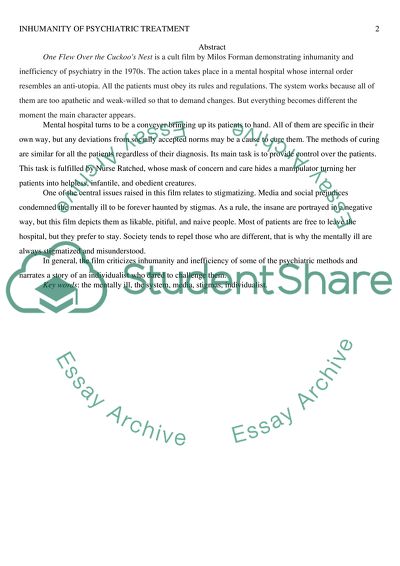Cite this document
(One Flew Over the Cuckoo's Nest as an Evidence of Inhumanity of Psychiatric Treatment Essay Example | Topics and Well Written Essays - 3250 words - 3, n.d.)
One Flew Over the Cuckoo's Nest as an Evidence of Inhumanity of Psychiatric Treatment Essay Example | Topics and Well Written Essays - 3250 words - 3. https://studentshare.org/psychology/1838979-reflection
One Flew Over the Cuckoo's Nest as an Evidence of Inhumanity of Psychiatric Treatment Essay Example | Topics and Well Written Essays - 3250 words - 3. https://studentshare.org/psychology/1838979-reflection
(One Flew Over the Cuckoo'S Nest As an Evidence of Inhumanity of Psychiatric Treatment Essay Example | Topics and Well Written Essays - 3250 Words - 3)
One Flew Over the Cuckoo'S Nest As an Evidence of Inhumanity of Psychiatric Treatment Essay Example | Topics and Well Written Essays - 3250 Words - 3. https://studentshare.org/psychology/1838979-reflection.
One Flew Over the Cuckoo'S Nest As an Evidence of Inhumanity of Psychiatric Treatment Essay Example | Topics and Well Written Essays - 3250 Words - 3. https://studentshare.org/psychology/1838979-reflection.
“One Flew Over the Cuckoo'S Nest As an Evidence of Inhumanity of Psychiatric Treatment Essay Example | Topics and Well Written Essays - 3250 Words - 3”. https://studentshare.org/psychology/1838979-reflection.


